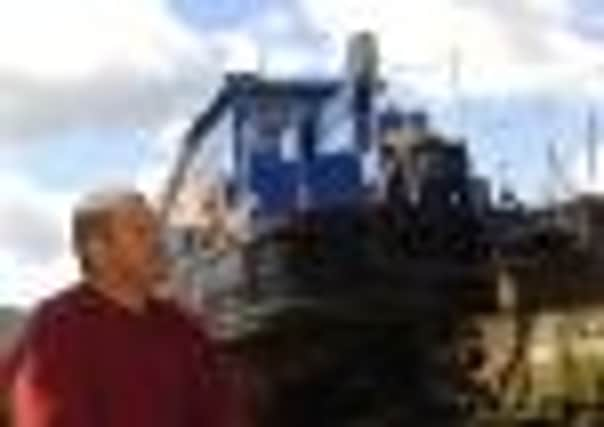All aboard for a voyage through history


FOR more than 50 years, the canals, rivers and coastal waters of the UK were the stamping grounds of a distinctive fleet of boats.
Although their appearance differed little from other barges, tankers and trawlers plying their trade, what set them apart was their names: Borrowdale H, Constance H, Wheldale H and dozens more – the characteristic suffix indicating they were part of the John Harker fleet, constructed at the company’s yard in Knottingley.
Advertisement
Hide AdAdvertisement
Hide AdBoats had been built in Knottingley for hundreds of years, but the opening of the Aire and Calder Navigation, from there to Goole in 1826, turned an essentially DIY process into an industrial-scale operation.


One of the biggest 19th-century shipyards was established by the Garlick family and it was this which, in 1929, was bought by long-established shipping company Harkers in order to build their own vessels.
The last of the 316 boats built for Harkers and other customers left the slipway in 1979 but that was not the end of the story, for today the site’s maritime tradition is kept alive by the increasingly busy operation of Maurice Hirst Boatbuilders.
Maurice bought part of the site on Fernley Green Road (the former fabrication shops are used by several other businesses) in 1985 and now employs five people, one of the first to join being former professional diver Ty Crotty.
Advertisement
Hide AdAdvertisement
Hide AdTy said: “At the time I lived in Bradford and I put a bid in for a boat which had sunk at Bullholme Lock, in Castleford. I’d forgotten all about it until I got a phone call to say ‘it’s yours’, so I brought it to Hirst’s to start doing some work on it, and I never left!”


Quite literally – for Ty, fiancée Julie Edgar and fox terrier Bertie now live on a converted Bridlington trawler, The Raven, moored on the canal at the side of the yard, from where both of them play a full part in an increasingly busy operation.
“We build and repair the hulls and metal structures of the boats, then others do the fitting out either here or elsewhere,” said Ty. “One of our main jobs to start with was looking after the sand- and stone-carrying boats that were built here, while Maurice was building narrowboats and wide-beam boats from new.
“More recently, we’ve also started doing maintenance on British Waterways’ fleet – painting, welding, engine work – because they’re restricted in what they can do in their workshops at Stanley Ferry, as they’re listed buildings.”
Advertisement
Hide AdAdvertisement
Hide AdRepairs and restoration form the bulk of the work at the yard, which currently has 20 boats – including a couple of former Harker vessels – tied up on the river, in the dock or hauled out of the water, in various states, from rusting hulks to freshly-painted.
A typical job was the recent conversion of the former Hargreaves fleet of coal compartment boats, made redundant when Ferrybridge power station stopped receiving fuel by water.
“These had been tied up at Castleford for years,” said Ty. “Now most of them have gone to London to be houseboats and there’s one we’ll have finished in a couple of weeks that’s going to Brighton.
“We can build new houseboats up to 80ft long, though 57ft by 12ft is the most common size in the canals round here. We’ll do them pretty much as the customer asks – that’s why there’s one over there with gull-wing doors,” he said, pointing to another coal barge conversion bobbing up and down on the Aire and Calder Navigation.
Advertisement
Hide AdAdvertisement
Hide AdTy, Julie and Maurice are very conscious of the yard’s history and the fact they are maintaining a Knottingley tradition.
Ty pointed out a spur of land where the canal splits into two channels. “I believe Harkers used to live in a house over there,” he said. “Right up to the 1970s, when a new boat was going to be launched, they’d bring local schoolchildren to stand there and watch, and they’d end up getting soaked.”
That simply wouldn’t happen in these days of prescriptive health and safety – yet, ironically, the constraints imposed by this modern obsession are one of the reasons why the yard is thriving.
“There are fewer and fewer places that can do this kind of work, which means we’re getting busier and busier, said Ty. “I think we’ll be here for a long time to come.”